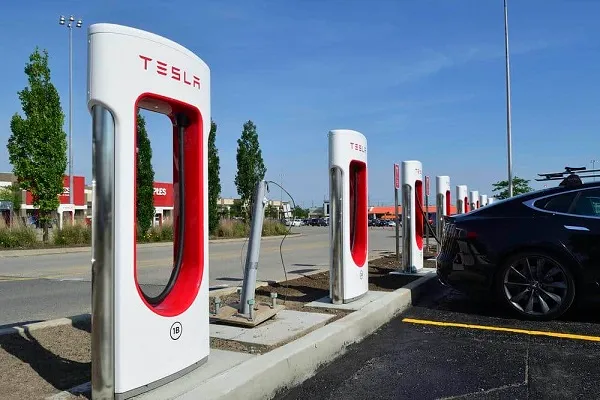By BITA BEHPOOR
Staff Writer
This past August, as students were either basking in the blissful ignorance of relaxation or stressing out over the upcoming hectic school year, the resources of the Justice Department’s civil rights division were directed towards investigations of affirmative action policies in universities. Claims of reverse discrimination being implemented in the college admissions process served as enough justification to move forward. The announcement has since incited a country-wide debate, reigniting a discussion over how effective affirmative action is. After heated arguments from both sides, there is still no clear answer to this question: Has affirmative action been effective?
The controversy regarding affirmative action arose in the early 1960s, when its concepts were first implemented in the form of Executive Order 10925 by President John F. Kennedy, detailing only the equality of employment in federal contracting.
Since then, supporters and critics of affirmative action have heavily debated the issue, from notable Supreme Court cases such as Gratz v. Bollinger and Grutter v. Bollinger concerning the University of Michigan to the more recent 2015 decision to uphold the affirmative action program.

Over many decades of legal and political disputes, affirmative action has evolved into a system with the primary purpose of improving and increasing education and job opportunities for minorities suffering from socio-economic difficulties. Many institutions of higher education and companies offering job opportunities have adopted recruitment guidelines in accordance with Executive Order 11246, signed by President Lyndon B. Johnson in 1965. By requiring non-discriminatory employment practices by government contractors, the Executive Order aimed to increase the number of minority employees in the workplace. Statistics show that these policies may have been effective. In 2011, the National Center for Education Statistics revealed that 65% and 63% of African Americans and Hispanics respectively enrolled in college immediately after high school graduation, which is an increase from historical rates of college enrollment. Even so, affirmative action has not served as a major benefit to the rest of the population the policy intends to help: the remaining low-income students that belong to minority groups.
In low-income environments and residential areas, affirmative action helps a small portion of a much larger group of students. The majority of low-income students are neglected. CNN defined affirmative action as policies focusing on, “… improving opportunities for groups of people, like women and minorities, who have been historically excluded in United States’ society”, with an emphasis on education and employment. Currently, however, affirmative action often only applies to university applicants, not the population of low-income students as a whole. For affirmative action to truly fulfill its purpose, the quality of pre-college education in low-income areas would have to be equivalent to the quality of education in more higher-income, affluent areas.
According to the United States Department of Education’s Office for Civil Rights, elementary and secondary schools consisting of a high number of African Americans and Hispanics in low-income areas are less likely to have better quality education materials, such as advanced courses and experienced teachers. By coming to the aid of only college applicants, the policy ignores the rest of the population: adolescents and younger children who need a better education to give them the same opportunities as children in higher-income environments. Most public education systems in these areas need more teaching staff and a revised curriculum, on par with a public school in a more affluent area.
The contrast between public schools in different areas can be illustrated with the disparities between two towns in Connecticut: Greenwich, a higher-income, more affluent area, and Bridgeport, a low-income, high-poverty area. Districts in a high-income area like Greenwich have access to advanced material and an experienced teaching staff, as well as more technologically advanced materials such as laptops. On the other hand, school districts in Bridgeport, a low-income area, have a significantly smaller teaching staff, larger, less exclusive class sizes, and a lower budget than a school district in Greenwich. The notable difference between education in high and low poverty areas shows the real problem that education policy should address. Giving these children equal opportunities before college applications would be a way to truly achieve the goals of affirmative action–a scenario that, unfortunately, has not been reached.
Furthermore, recruitment based on affirmative action focuses on minorities, especially in lower-income areas, and accepts those without sufficient preparation for higher education or certain jobs. A past court case, Grutter v. Bollinger, details how race can be a major factor in the acceptance or rejection of an application, and illustrates how the college admission process can, to a certain extent, ignore the merit and ability level of the applicant based on race. This only harms unprepared students in more prestigious schools, when they may succeed more academically at a less elite institution — an institution where the advantage of affirmative action during admissions would be less necessary. As Clarence Thomas, Supreme Court Justice and former chairman of the Equal Employment Opportunity Commission, said, “I watched the operation of such affirmative action policies when I was in college…and I watched the destruction of many kids as a result.” A poor academic performance hurts unprepared low-income students later in their careers, even if they attend an elite university.
Instead of evaluating the applicant based upon merit, which is a more preferable and accurate deciding factor for university and job acceptance, the ones in charge of recruitment focus on race, racial difference, and diversity percentages, a thought process that encapsulates the very definition of racial discrimination. This process does not give low-income applicants of different minority groups the equal opportunity affirmative action aims to give. Instead, it harms the lower-income applicants’ education and future, especially applicants whose academic preparedness and ability are below the median level of the elite institution. These policies unconsciously integrate a process of racial preference into the college admission and recruitment process.
That’s not to say that there are no benefits of affirmative action. Affirmative action policies that allow colleges and universities to reach out to students in underrepresented groups in low-income areas can be viewed as a counteraction of decades of oppression based on race, gender and economic status. The policies of affirmative action provide students of different racial groups living in low-income environments the same opportunities in the college application process as students of high socioeconomic status. The increase in diversity can also be seen as an educational advantage for all students by promoting open-mindedness and tolerance, and also discourages certain aspects of racial preference and exclusion during the college admission process. According to the National Conference of State Legislatures, affirmative action does allow students in underrepresented minority groups to receive better jobs and make more money, an option that wasn’t available within the last century. However, these students only make up a small fraction of the applicants coming from low-income areas, which include those who are prepared and underprepared for university, and make up an even smaller fraction of the overall population of students that live in low-income areas.
Overall, affirmative action has not been effective to the extent that it could be. More resources could be put into implementing affirmative action not just for college admission processes and recruitment, but also into improving the pre-college educational opportunities available to low-income communities. Focusing the Justice Department’s resources on investigating allegations of reverse discrimination can benefit certain socioeconomic groups, and may help in university recruitment methods by making the admission process more selective in terms of merit and academic ability. Nevertheless, it will not make affirmative action a more effective policy. To truly implement affirmative action as an effective policy, the overall population of students in low income areas need to have the same opportunities and resources as the students in affluent, high income areas, and recruitment methods for universities need to start being more exclusive with their admission and take into regard the academic preparedness and overall ability of an applicant.
How affirmative action misses the point
October 4, 2017
0
Donate to Sword & Shield
$180
$1000
Contributed
Our Goal
Your donation will support the student journalists of University High School. Your contribution will allow us to purchase equipment and cover our annual website hosting costs.
More to Discover













